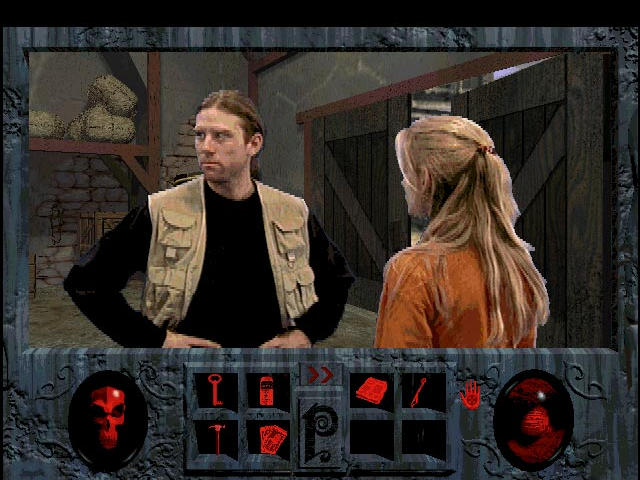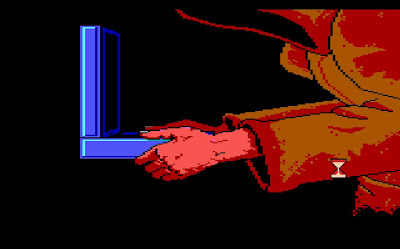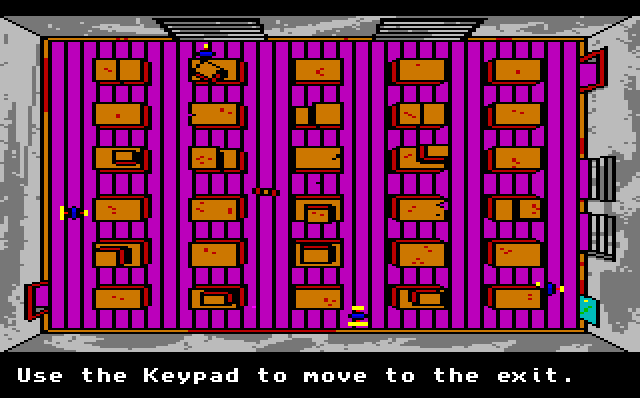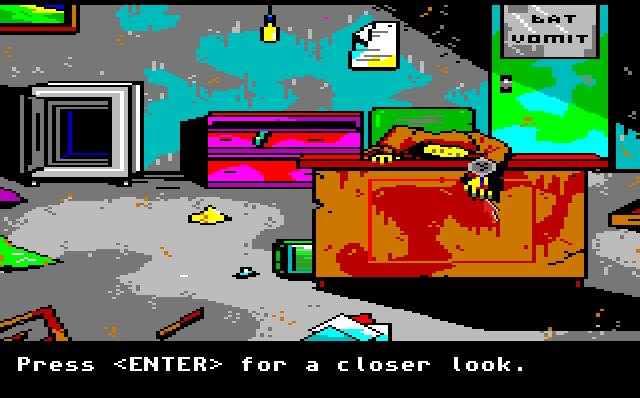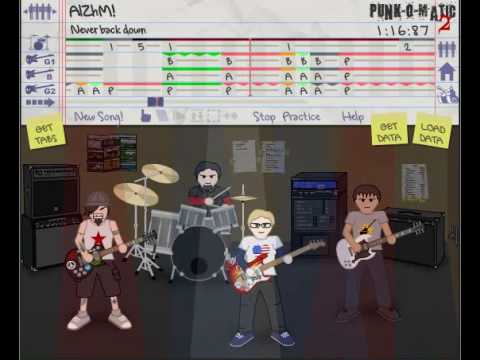There are some games that never get old, and I can go back
to again and again, and my only wish is that they were longer.
I think I'd still play any early Tony Hawk
game (keyword 'early') if one was handed to me, and I regret getting rid of
some of those discs.
 |
| Turn back! Turn back! You've gone too far! |
Other games are perfect or near-perfect in how long they
last: the gameplay is interesting and fun 'til just after the end, so you never
get bored throughout, but you don't clamor for more; you just feel satisfied
from a great game experience.
I think Super
Mario Bros. is like that.
If you beat
the game by warping, you don't quite feel completely satisfied, so you re-challenge
yourself to beat the game by completing all 32 levels.
After that you feel like "Yes, that was
quite enjoyable, but I'm done now."
Really no need to beat the second run through that becomes available with
different enemies, I assure you.
Then there are other games that you give up on, because the
gameplay was interesting and fun at first, but it overstayed its welcome. This is a line hard to describe, since
everyone has their own opinion on what games are too long. But I think for me, often RPGs are too long
considering their gameplay. I remember
playing Earthbound Zero (Mother) and getting around 95% of the way through
before simply giving up. Not because I
died or it became too challenging or frustrating, but simply because the grind
got boring. The gameplay was fun and
enjoyable, but it just didn't go barely far enough to be interesting to the end
of the game. If the game were only 5%
shorter (no story changes, just shrink a few levels), I would have finished it
and been satisfied. I was interested in
the story, too, but my desire to finish the story did not override the plodding
gameplay.
 |
| I'm pretty sure I never figured out why my house was haunted. |
And it's a fine line to cross. I'm sure many people thought Earthbound Zero
was great, espcially RPG diehards (as a generalist who enjoys almost any genre,
I'm not the target audience for RPGs, and find that most of them overstay their
welcome). I've also heard the tired argument that "It's about the story,
not the gameplay" in RPGs. Sure,
story can take precedence over gameplay, I have no problem with that; but
gameplay should not undermine the desire to even finish the story.
And it's hard sometimes to determine, from a conceptual
standpoint, how long the gameplay will last for the target audience. You might have a great mechanic that's
enjoyable for fifty hours, but you have no way of knowing that until far into
the development process, and your game is expected to take about sixty hours
for the average player to complete.
Well, you just got hosed, and it was hard to determine that without an
extreme amount of testing before making all those assets.
One way to get it right is to betatest, getting gamers who
have never played the game to go from start to finish and use their feedback to
determine if the game is too long or too short (the former sin being far worse
than the latter).
 |
| Too short, but I'm okay with that. |
The other option that was a fad for a while (and is it still
a fad? I hope not) was to incorporate minigames to break up the main
gameplay. I remember Final Fantasy VII
had a kind of tower defense minigame on a mountain (before the concept of tower
defense was even a thing; oh, that hipster Square). Tony Hawk's Pro Skater 4 added baseball,
tennis, and other nonsense. The problem
with these is their very intended purpose: to break up the gameplay. They feel jarring and hurt the overall
experience. Sure, they make the player
want the normal gameplay back, but only because they were given a diversion
that was far worse.
Thankfully, I haven't seen that happen too much anymore, and
when it does, it's a much smoother transition that works within the game so you
hardly notice you're doing anything different.
Something like the pegasus rides in God of War II might be an example,
since you're still doing approximately the same thing you did on land (kill
things), so it's not a total departure.
The other way that most games prefer to do things is to
introduce new mechanics throughout the main game that enhance gameplay. In RPGs, you get new skills, items, spells,
etc. In first-person shooters, you get
new kinds of weapons.
But sometimes I feel like that's just delaying the inevitable. If the core mechanics constantly need
something new to perk it up, it's just slapping one band-aid on top of
another. I've played too many games where
the gameplay has just started to get boring, then a new weapon appears like a
deus ex machina to rescue the game for another ten minutes.
Some games do new mechanics well, adding new dimensions of
gameplay without overshadowing the original gameplay. But that works because the gameplay without
the new mechanic is still fun and interesting by itself. Take, say, Mario 64. Before you get any caps, the game is awesome,
and when you start to get caps, it opens up new possibilities and locations you
couldn't reach before, provides new challenges, and adds significantly to the
experience. Yet it also does a great job
balancing these mechanics, by making caps a rare thing to get. Only certain blocks give them to you, and
they only last for a limited amount of time.
The caps don't overstay their welcome, and the gameplay without them
doesn't get diminished after their discovery.
There is a preponderance of upgrades in games these days, I
think. Seems like too many games give
you a new upgrade or weapon or ability every five minutes, as if you're a baby
and each mechanic is a bigger set of keys being jangled in front of your
face. At some point, the keys get too
loud and bright and you get overload.
And let's stop this metaphor before it becomes stupid.
Anyway, I often feel that these upgrades try to distract a
player from bad gameplay by making it addictive instead. You want to know what you'll get next, even
though you don't enjoy playing the game in the first place. If you think about Super Mario Bros. again,
there are three upgrades you can get: the mushroom, the flower, and the
star. All three are introduced in the first
level, so you know what to expect, and they become a standard part of gameplay
that you work hard to keep from losing.
But you don't get a new upgrade in the middle of the game that
significantly changes the gameplay. I
think it would be quite damaging to the game if you had to wait until world
four to get your first fire flower.
I remember Manhunt, that game where you sneak up on people
and kill them in all sorts of delightfully gory ways. There is a point in the game where you
operate a magnetic crane with a fridge on it, so you can whack bad guys around. I thought it was a funny diversion for a couple
minutes, but then it lasted just a little extra too long so I wanted to get the
heck out of the crane so I could play the main game again. It was a minigame that was funny at first but
overstayed its welcome.
Then came the point where you stop sneaking around and the
game turns into a shooter. I turned the
game off. That completely changes the
gameplay and it wasn't the game I paid for and was promised. But I see why they did it: the sneaky killing
was getting boring. Well, instead of
changing the gameplay completely, they should have just shortened the
game. I would have been perfectly
satisfied if the game ended just a hair before the mechanics got boring, so
there would be no need for gunfights.
 |
| So it wouldn't devolve into every other game ever made. |
True, the game would have been short compared to other games,
but it would have been exactly the length it needed to be.
I think there is this idea that games need to be extremely
long to be worth the price, but what's that maxim? "Quality over
quantity." I think the mechanics of
a game should determine how long the game lasts, and nothing else. If the story needs more gametime, then
perhaps the story should belong in a game with gameplay that is interesting for
a longer amount of time.
And then there are the games I mentioned right at the
beginning, games which seemingly never get old.
The gameplay is just so good that you'll be happy to play the game until
you upgrade your console or computer and it no longer works. And these games certainly do exist; take any
successful multiplayer game. All the
infrastructure required, the servers and support teams, bank on the gameplay
being so good it's worth all that cost.
But perfect gameplay for single-player doesn't translate to
perfect gameplay for multiplayer, so it becomes an even trickier puzzle to
solve. But I think that's for another
article.
 |
| What we can say is that this does not work for multiplayer. |





